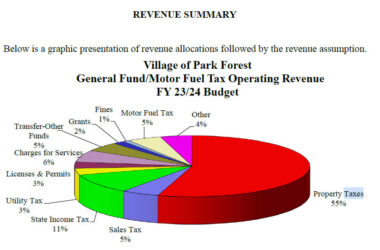
Park Forest, IL-(ENEWSPF)- We’ve heard for a while that 5G is coming. It’s going to be super-fast. 5G will change everything. Just like 4G was supposed to do. Just like 3G.
Get ready. 5G (tech-speak for nothing more than “fifth-generation”) is coming to Park Forest in the shape of boxes and more boxes everywhere, on virtually every light pole in Park Forest. And there is nothing the Village can do to stop it, and precious little the Village can do to regulate it.
So has the FCC written. So shall it be done.
Unlike current cell towers which are incredibly high and appear sporadically throughout the town — free-standing, attached to the top of water towers — 5G cells use less energy and must be placed closer to the ground.
For all that 5G is supposed to offer, the cells that transmit the uber-fast connections can only transmit 300 to 500 feet, according to the agenda briefing. That means each company that wishes to offer 5G technology must place multiple cells throughout the Village.
Each and every company.
“5G will improve fixed wireless, mobile technology, weightless positioning, the Internet of Things (IoT) and more efficient use of spectrum,” said David Witkowski, executive director of civic technology initiatives at Joint Vent re Silicon Valley, a nonprofit organization that convenes Silicon Valley leaders across sectors to solve various regional issues together. He’s quoted in the June 2019 issue of American City & County, an article that accompanied the July 11 Agenda Briefing prepared by Hildy L. Kingma, AICP, Director of Economic Development and Planning and Roderick Ysaguirre, PE, Director of Public Works.

The Village Board considered and passed an ordinance to do all that Park Forest can do to ensure within the many limitations imposed by the FCC.
Here are details from the July agenda briefing (emphasis added):
On September 27, 2018, the Federal Communications Commission (FCC) issued an order that limits local authority over small cell wireless facility deployment and management when they are located within municipal rights-of-way. Also in 2018, the Illinois State Legislature, in anticipation of this FCC ruling, adopted the Small Wireless Facilities Deployment Act (the Act), to accomplish many of the same goals of the FCC ruling. The Act provides the framework within which the telecommunications industry may improve their coverage through the installation of small cell wireless facilities using municipal light poles and traffic signals within public rights-of-way.
The Act limits municipal regulatory authority to preclude small cell installations and dictates aspects of local regulation and application processing (e.g., permit fees, review timelines, evaluation criteria, annual fees, etc.). It is important to note that, under the Act, the placement of small cell wireless facilities within public rights-of-way must be permitted by right, application fees and annual fees are capped, small cell installations are allowed on poles of the providers’ choosing subject only to limited standards regarding safety and aesthetics, and existing agreements must revert to the provisions of the Act within two years of the effective date of the Act (August 1, 2018).
Details regarding the ordinance, also from the Agenda Briefing:
In general, the proposed Ordinance addresses all items needed for the Village to be in compliance with the Act. Provisions of note within the attached Ordinance include:
- The Ordinance is inserted into the Municipal Code as part of Chapter 106 – Utilities.
- Establishes the application process and fees for small wireless facilities consistent with State Statute. As part of the application process, the provider must submit a structural engineer’s documentation that the structure on which the facility is to be placed is capable of handling the extra weight. If not, the structure must be replaced.
- Gives the Director of Public Works authority to grant waivers to the height and undergrounding requirements of the Ordinance. Some ordinances reviewed by Staff define these as Variations that have to be considered by the Planning and Zoning Commission/Board of Trustees. Based on discussions with other communities, Staff recommends the administrative waiver process because of the level of expertise needed to make these decisions and the lack of discretion permitted by State Statute.
- Establishes maintenance requirements that allow the Village to remove facilities that fall into disrepair, after sufficient notice to the provider.
- Allows the Village to revoke a permit for a small wireless facility under a number of circumstances, after sufficient notice to the provider and with a provision for appeal to the Board of Trustees.
- Requires that all small cell wireless facilities located on private land zoned R, Residential, C-1, Neighborhood Commercial, and C-2, Mixed Use, must first obtain a Special Use Permit and comply with design standards to be developed. Note that Staff will be working with the Planning and Zoning Commission in the coming months to develop these standards.
- Requires that all small cell wireless facilities, located in the public rights-of-way and on private property, must comply with design standards to be developed. As noted, Staff is currently working on these design standards with the intention that they will be incorporated into the UDO for facilities located on private property and adopted by the Board for facilities located in the public right-of-way.
“The providers note that this will create faster, more reliable service. But, it comes with the trade-off that every provider in the market will want their equipment to be deployed in as many locations as possible. (emphasis added) Therefore, it is important for the Village to have an ordinance in place to have at least the minimal review authority permitted by the State Statute,” Directors Kingma and Ysaguirre said in the agenda briefing.
So look for these things everywhere.
Whether you like them, want them, or not.








